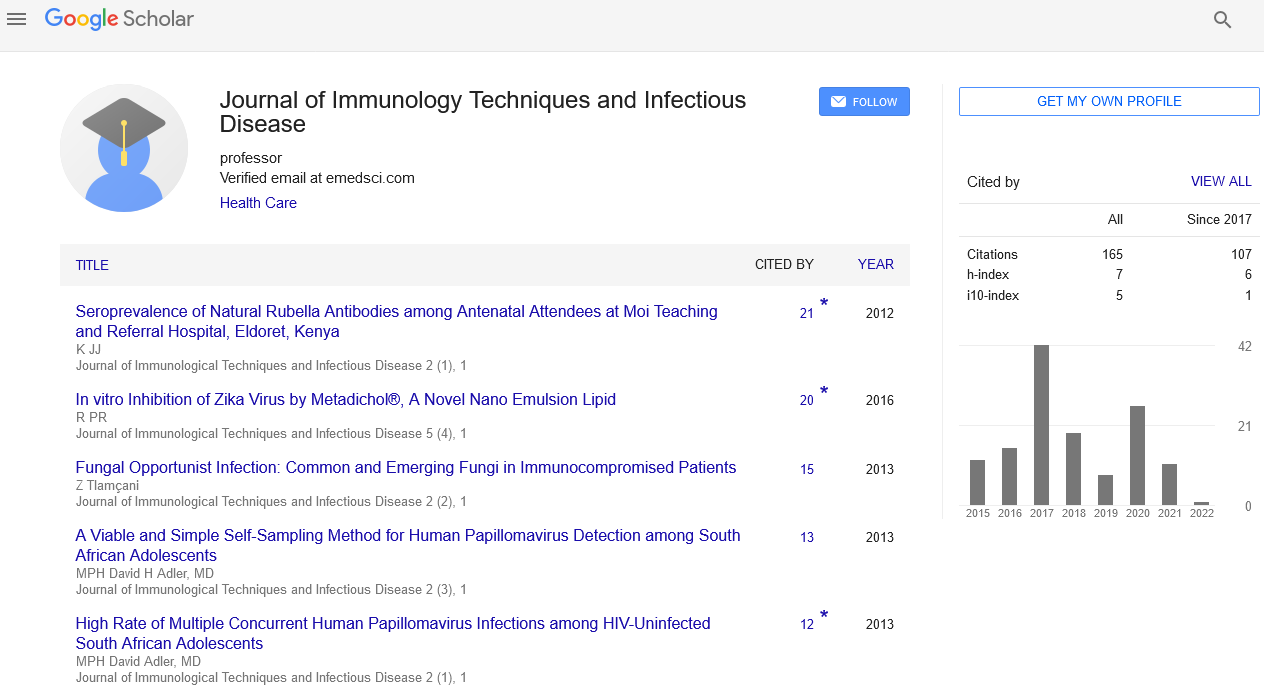Serological and molecular survey of avian H9N2-subtype influenza virus infections in human populations in Khuzestan province of Iran
Masoud Soltanialvar and Farshad Akbarnejad
Islamic Azad University, Shuster Branch, Iran
Dr. Jahangir Pharmaceutical & Hygienic Co., Iran
: J Immunol Tech Infect Dis
Abstract
In recent decades, some of the avian influenza H9N2 viruses’ strains have acquired ability to bind to human specific receptors, which highlights their potential role as candidates for the next influenza pandemic. Therefore, the main objective of this study was to detection of avian influenza A (H9N2) virus in human populations in Khuzestan province. In this study, 180 blood samples and 30 nose-throat (NT) swabs samples were obtained. Hemagglutination inhibition (HI) test was performed to detect anti-H9 antibody. One local isolate of H9N2 virus (A/chicken/Iran/RZ 28/2008) was used as an antigen strain in hemagglutination inhibition (HI) test. To monitor the virus in the human population, RT-PCR test was designed based on the most common genotype in Iran, targeting type A and H9 subtypes by specific primers for Matrix (M) and Hemagglutinin (HA) genes, respectively. The result of this study showed that from 180 total received blood samples, 21 samples had titers greater than or equal to 20 (66/11 %).The highest hemagglutination-inhibition (HAI) antibody titers were related to the slaughterhouse workers (HI titers: 1:80). All of nose-throat (NT) swabs samples were negative for the presence of virus by RT-PCR. There was significant difference among mean sera antibody titer serum in people with different occupation. Also, antibody titer in occupations poultry industry was significantly more than non-dependent jobs. The results of the current study indicated more infection than previous studies. Therefore, HI test detect easier local isolate of influenza virus infection.
 Spanish
Spanish  Chinese
Chinese  Russian
Russian  German
German  French
French  Japanese
Japanese  Portuguese
Portuguese  Hindi
Hindi 
